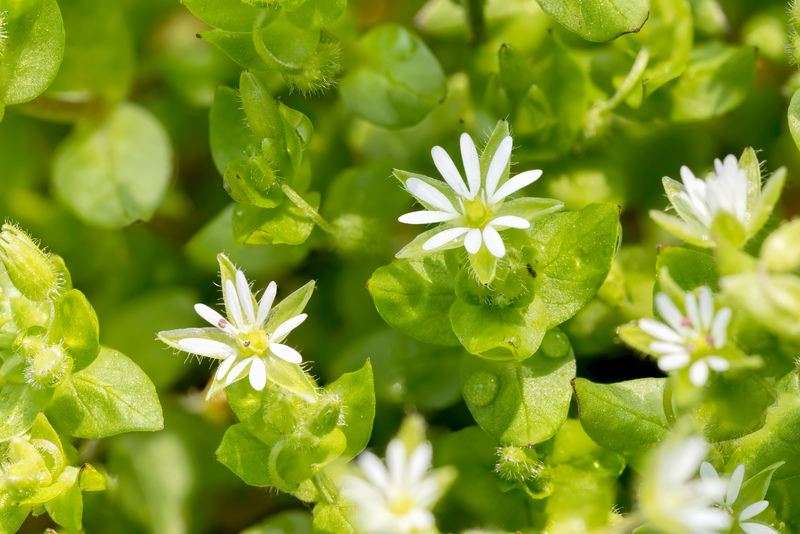Tail-Wagging Tips for Gardening with Dogs
Posted on 29/06/2025
Tail-Wagging Tips for Gardening with Dogs: Create a Pet-Friendly Paradise
Gardening is a joy for many, but if your best pal has furry paws and a wagging tail, you might wonder: can your landscape thrive alongside your four-legged friend? The good news is yes! Gardening with dogs can be a rewarding experience for both you and your canine companion, provided you plan thoughtfully and make some dog-friendly gardening adjustments.
In this comprehensive guide, we'll explore tail-wagging tips for gardening with dogs to help you cultivate a vibrant, beautiful, and safe outdoor environment for your pooch and your plants. Whether you're laying the foundation for a new garden or adding to existing green spaces, you'll discover how to strike the perfect balance between canine fun and flourishing flora.

Why Consider a Dog-Friendly Garden?
Dogs are naturally curious creatures, drawn to the enticing sights, sounds, and smells of your garden. Left unchecked, their digging, chewing, and roaming can cause havoc for delicate plantings. However, establishing a garden with your dog's needs in mind means:
- Reduced damage to plants, lawns, and landscaping.
- Enhanced enrichment for your pooch--sniffing, exploring, and even helping dig in the soil!
- Safe elimination of risks posed by toxic plants or unsafe garden tools.
- A strengthened bond between owner and dog as you enjoy your green space together.
The Essential Elements of a Dog-Smart Garden
Designing a dog-friendly garden requires more than simply fencing off flower beds. Here are foundational strategies for a harmonious landscape:
1. Know Your Dog's Nature
- Is your dog a digger, a chewer, or a gentle explorer?
- Do they enjoy basking in the sun, or do they seek out cool, shady spots?
- Are they high-energy and prone to zoomies, or more laid-back?
Tailoring your garden design to your dog's personality will prevent many problems before they start.
2. Create Safe, Dog-Proof Boundaries
Secure fencing is the first line of defense in pet-friendly landscaping:
- Opt for sturdy, escape-proof fences--at least as high as your dog can jump and well-anchored below the ground for diggers.
- Check for gaps where a curious canine might squeeze through.
- Use lattice or hedging to create subtle barriers around delicate beds.
3. Plan Dog Paths and Activity Zones
Many dogs love to patrol their perimeters. Instead of constantly redirecting them, design pathways and play areas:
- Mulched paths or flagstones accommodate frequent traffic and muddy paws.
- Set aside an open space for fetch, tug-of-war, or supervised digging.
- Use hardy, non-toxic grass types that tolerate wear, such as Buffalo grass or fescue blends.
Plant Selection: Safe and Stylish Choices for Dog Gardens
Some plants are beautiful but toxic to dogs. Others hold up well, even to the occasional romp. Choose with care for a pet-appropriate garden:
Common Plant Hazards: What to Avoid
- Oleander, Sago Palm, Azalea, Foxglove, Ivy, and Daffodils are toxic to dogs and should never be planted where they can access them.
- Avoid mushrooms and fungi, since wild-growing types may be poisonous.
- Check for sharp-thorned plants or spiny shrubs which can injure your pet's eyes or paws.
Consult your veterinarian or the ASPCA's toxic plants list before adding new varieties.
Dog-Friendly Plant Picks
- Sunflowers - Bright, non-toxic, and appealing.
- Lavender and Rosemary - Hardy and aromatic, but avoid ingestion in massive amounts.
- Marigolds - Their scent can deter some pests and are generally safe.
- Camelia, Snapdragons, and Fuchsias - Safe for most dogs.
- Ornamental grasses - Resilient to foot traffic and make great hiding spots.
Consider Ground Covers
- Creeping thyme, elfin clover, or Irish moss can withstand light trampling better than traditional turf.
- Mulches: Choose cedar or pine mulch; avoid cocoa mulch, which is toxic to dogs.
Garden Maintenance: Best Practices for Dog Owners
1. Chemical-Free Is Key
Fertilizers, insecticides, and herbicides can be hazardous. To ensure a more pet-safe garden:
- Use only organic, pet-friendly products.
- Supervise your dog when new treatments are applied and follow label safety instructions.
- Opt for companion planting (using pest-repellent plants together to reduce chemicals).
2. Pet Waste Management
Regularly pick up dog waste to prevent lawn burn and garden contamination. Consider designing a dedicated "toilet spot" with:
- Easy-to-clean ground (pea gravel or mulch beds work well).
- Training your dog to use the area via positive reinforcement.
- Eco-friendly waste disposal solutions.
3. Regular Garden Checks
- Repair holes dug by curious paws to avoid accidents.
- Secure loose edging, ties, or garden tools that might be mistaken for chew toys.
- Prune back overgrown branches or sharp sticks that could snag fur--or eyes.
Enrichment: How to Make Your Garden a Canine Wonderland
An outdoor space is more than just a place to potty. Garden enrichment ensures that your pup is as stimulated as they are safe:
Incorporate Fun Dog Features
- Shady rest spots: Plant a small tree, install a doghouse, or use a waterproof sun sail.
- Water features: Splashing in a shallow, pet-safe fountain, kiddy pool, or a drinking fountain.
- Agility obstacles: Tunnels, steps, and ramps for dogs who love a challenge.
- Digging corner: Fill a sandbox with sand or soil and bury toys for a desirable digging alternative.
- Treat/foraging zones: Hide healthy treats or favorite toys for a game of scent-hunting.
Preventing Common Garden Problems Caused by Dogs
Even the most well-designed dog garden faces challenges. Here's how to troubleshoot:
Stopping Unwanted Digging
- Reinforce paths and beds with edging stones or garden fencing.
- Reduce boredom with interactive toys and playtime--many dogs dig when under-stimulated.
- Provide a designated digging area and reward your dog for using it.
Repairing Lawn Burns
High levels of nitrogen in dog urine can cause yellow patches. To minimize:
- Water the area immediately after your dog goes to dilute urine.
- Encourage your dog to drink more water to reduce concentration.
- Consider hardscaping small areas if damage is persistent.
Discouraging Plant Chewing
- Use bitter-tasting (dog-safe) deterrent sprays on valuable or vulnerable plants.
- Redirect curiosity with sturdy chew toys or enrichment puzzles outside.
Kid and Dog Gardening: Safety for All
Many families combine dog-friendly gardening with child-safe landscaping. For a truly harmonious yard:
- Ensure all play equipment is inspected regularly and kept in good repair.
- Teach children the basics of plant safety--what's safe to touch/eat and what isn't.
- Supervise both pets and kids in the garden whenever possible.
Seasonal Tips for Gardening with Dogs
The changing seasons each bring unique challenges and advantages:
Spring/Summer
- Watch for flea and tick activity in thickly planted areas.
- Ensure hydration by providing fresh water and shaded spaces.
- Monitor for garden pests and use non-toxic treatments only.
Fall/Winter
- Rake leaves frequently--wet leaves can hide dangers (sticks, moldy debris).
- Use pet-safe ice melts for paths and patios in winter weather.
- Replace summer annuals with tough, dog-proof winter greens or cold-resistant turf.

Troubleshooting and FAQs: Dog-Proofing Your Outdoor Oasis
- Q: How do I keep my dog out of freshly planted flower beds?
A: Use temporary fencing, wire cloches, or chicken wire just until plantings are established. Encourage use of designed dog paths with treats and praise. - Q: What is the best mulch for dogs?
A: Pine, cedar, or hemlock mulch are preferred. Never use cocoa mulch--it's toxic. - Q: My dog eats grass. Should I be worried?
A: Occasional grass-chewing is normal, but monitor for excessive eating as it could be a sign of stomach upset. Avoid fertilized or chemically-treated grass.
Conclusion: Grow, Play, and Thrive Together!
With thoughtful planning and a sense of adventure, you can nurture a garden that satisfies your green thumb and keeps your dog's tail wagging. Whether you're looking to attract butterflies, grow vegetables, or create an outdoor playground, gardening with dogs can be fun, safe, and rewarding.
Start by prioritizing safety, accommodate your dog's energy, and select resilient, non-toxic plants. Add enrichment features, maintain the space regularly, and, most of all, include your canine companion in the fun. By following these tail-wagging gardening tips, you'll enjoy a flourishing, joyful landscape that welcomes every member of your family--furry or not!


